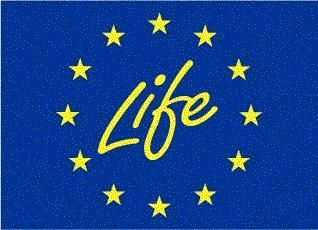| 1.What is a BREF? |
A BREF is a BAT Reference Document and is the result of the exchange of information for the guidance of decision makers involved in the implementation of the IPPC Directive. The BREFs are used by the Operators of the installations (during the preparation of the application for the IPPC Permit), the Environmental Authorities (Permit writers, Policy makers) and the Public in general.
|
2.Who are the main users of BREFs?
The main users are the:
- Operators of the installations
- Environmental Authorities (Permit writers, Policy makers)
- Public in general
|
3. A BREF has a specific legal status?
No. Pay attention to the fact that the BREFs are guidance documents only. They do not have legal status, they are meant to give guidance to industry, member states and the public on achievable emission and consumption levels when using specified BAT techniques. In every case the local conditions shall be taken into account when deciding the emission limit values and other conditions. In specific cases, the emission limit values might be higher or lower. Environmental quality standards in water and air might mean more strict values – or maybe zero emission/discharge. And there could be cases where the emission limit values could be less strict – to comply with the “best for environment as a whole” principle.
|
4. How to select the relevant techniques?
Article 2.11 of the IPPC Directive gives the definition of the Best Available Techniques. This definition is well known and we can read again the most significant parts to try to answer the above question: “BAT shall mean the most effective and advanced stage in the development of activities and their methods of operation which indicate the practical suitability of particular techniques for providing in principle the basis for emission limit values designed.. generally to reduce emissions and the impact on the environment as a whole…………..Available techniques shall mean those developed on a scale which allows implementation in the relevant industrial sector, under economically and technically viable conditions, taking into consideration the costs and advantages…………..“. From this it is clear that the BAT cannot be identified on the basis of laboratory pilot as well as on the characteristics of “old“ installations. It is necessary to identify “advanced“ installation of appropriate scale for implementation in the considered industrial sector.
|
5. What is the EIPPCB?
The EIPPCB can be seen from three angles:
- Firstly it is a project identified within the fifth framework program of the European Commission to carry out the technical work required by our colleagues in the Commission Services and in particular those of DGs Environment and Enterprise.
- Secondly the EIPPCB is a unique group of people, each an expert in his or her own right recruited to work within the IPTS on the EIPPCB project. Their individual expertise on process engineering and environmental permitting supplement their specific expertise on one or more of the subject work areas being covered by the EIPPCB to create a multi-national team of people dedicated to producing quality reference documents to assist the efficient and effective implementation of the IPPC Directive.
- Thirdly from the view of all our experts in all our Technical Working Groups the EIPPCB is a focal point for all relevant knowledge and information to be discussed at a technical level with other renowned experts. This is the catalytic function of the EIPPCB although few would claim that the catalyst is unchanged in the process itself. The staff are a mix of longer term Commission employees and Detached National Experts who rotate on a shorter term basis bringing specific expertise into the EIPPCB team and eventually leaving to return to their home employer with a unique European experience to add to their CV and to the expertise of their employer.
|
6. How to use BREF in the Permit?
When evaluating the BAT for the applicant, it is important that the applicant and the authority makes reference to the actual BAT Reference Documents used, and argue for the choice of document. In the comparison of the applied production to the BAT notes we are first looking at the possible substitution of dangerous substances, and then on the technological processes. It shall be described which dangerous substances are used in the production, and what should be done in terms of substitution to reach BAT. It shall be described which processes are used in the production, and what should be done to reach BAT. A subdivision of this paragraph into single processes can be useful for clarification. All new productions shall apply BAT according to the definition in the IPPC Directive. For existing companies it should be described:
- whether the process uses BAT and if not - why not
- which terms in the permit that will ensure that an action plan towards BAT
- will be mandatory for the enterprise
- the time limits and why it is necessary to give the enterprise time to apply BAT
|
1. What is the purpose of the, as called “information exchange”?
The purpose of the information exchange is to assist the competent authorities in EU Member State when determining BAT for specific industrial and other activity installations during the permitting procedure. The published results will take the form of BAT Reference Documents (BREFs) for each sector covered by the ANNEX I of the IPPC Directive.
|
2. What is the Information Exchange Forum Committee?
For the clarification of political and strategic questions, an “Information Exchange Forum Committee” (IEF) has been set up that comprises representatives from the EU Member States and European Industrial Federations. This Committee has two regular meetings per year. The meetings are chaired by the European Commission. The head of the European IPPC Bureau participates and gives a presentation about the works of all TWGs.
|
3. What are the EIPPCB and IPTS?
EIPPCB is the European IPPC Bureau, which has been established for the needs of the IPPC Directive. The EIPPCB acts as a neutral, technically competent secretariat to all TWGs. It’s located within the European Commission’s Joint Research Center in the Institute for Prospective Technological Studies (IPTS), Unit Technologies for Sustainable Development.
IPTS was established in 1994 with the mandate to provide prospective policy support to the policy-making process of the European Union. IPTS maintains the European Science and Technology Observatory (ESTO network) which links together more than 30 renowned research orientated organizations for the benefit of the European Community.
|
| 4. How we can describe, in few words, the relationship between TWG and BREF? |
BREF is the BAT Reference Document and is the product – the result of the exchange of information carried out with a dedicated TWG constituted for the purpose. The TWG is the primary source of all information required for a BREF. |


